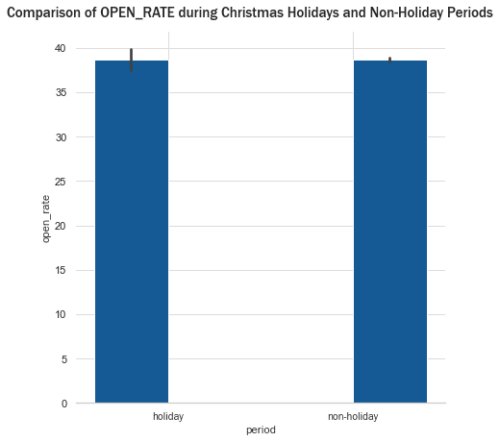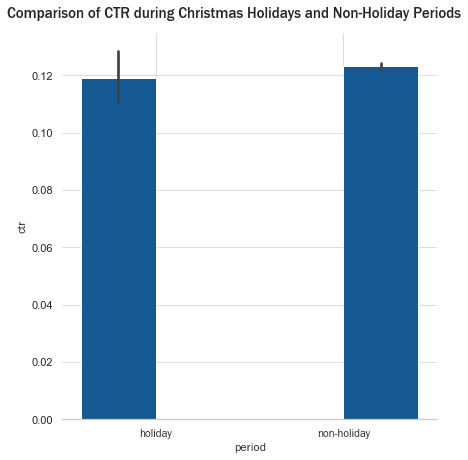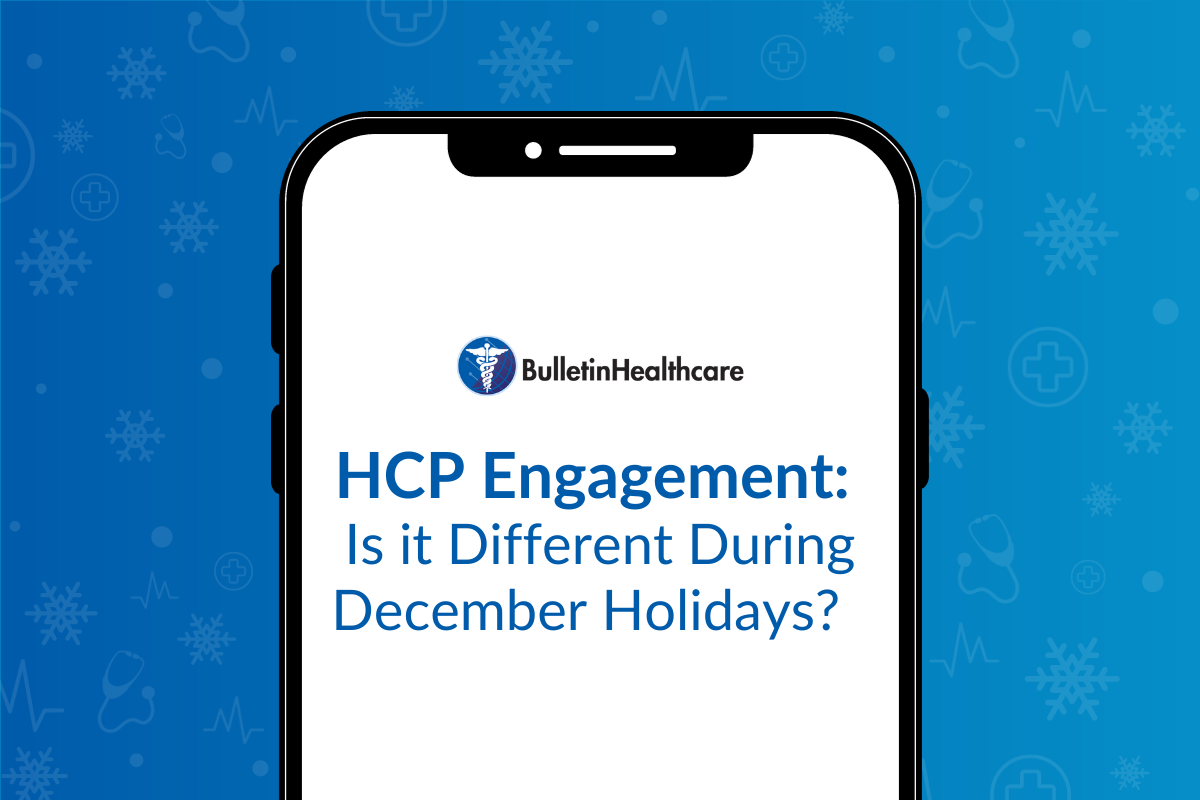Every year we are asked by many clients about the level of HCP engagement in the latter half of December. Understandably, some advertisers have concerns about a drop-off in engagement during the December holidays. However, we’ve found year after year that HCPs engage with our briefings at the same rate or better during the holiday time period as any other time throughout the year. Below we take a closer look at the trends from 2018 through today.
We define the holiday period as December 20th through January 3rd. We compared open rate and click-through rate (CTR) engagement for ad drops sent during that timeframe for the years 2018 through 2022 against ad drops on any other day throughout those years.
What were the results?
The average open rate for e-mail briefings sent during the December holiday timeframe versus any other day of the year was nearly identical (38.70% vs 38.69%, respectively).

And, the average ad CTR of e-mail briefings sent during the December holiday period was 0.119%, while the average CTR of mailings sent throughout the year was 0.123%.

In other words, both email open rates and ad CTR remain about the same for e-mail briefings sent during the holiday season as they were on any other day of the year.
This is consistent with our findings reported back in 2022 and 2021.
While it may seem counterintuitive, there is a simple explanation for that. As our analysis last year indicated, emails sent around Christmas time may not necessarily be opened on the day they were sent, but HCPs do eventually catch up on them a few days later.
So, rest assured that your HCP brand communications sent at the end of December are just as likely to be viewed as they would be if sent in an email any other day of the year, based on historical trends.
To learn more about how BulletinHealthcare can help your brand achieve its goals during the holiday season and beyond, connect with us!
Methodology notes:
For robustness, we removed outliers, i.e., datapoints lying outside three standard deviations from the mean, and then averaged the metrics (CTR, open rates) by day and month across a five-year period starting in Dec 2018 and ending in Oct 2023. For example, our data point for Dec 20th represented an average of Dec 20, 2018, Dec 20, 2019, Dec 20, 2020, Dec 20, 2021 and Dec 20, 2022.
Due to the sample size imbalance (n=13 for the holiday period and n=345 for the non-holiday period), we used Welch t-test, a test that accounts for unequal variances between the groups, to determine statistical significance of our results. We found that the differences on open rates and CTR values were not statistically meaningful (at p < 0.05).
*All metrics are adjusted for the effect of iOS 15.

Manager, Data Insights & Analytics



